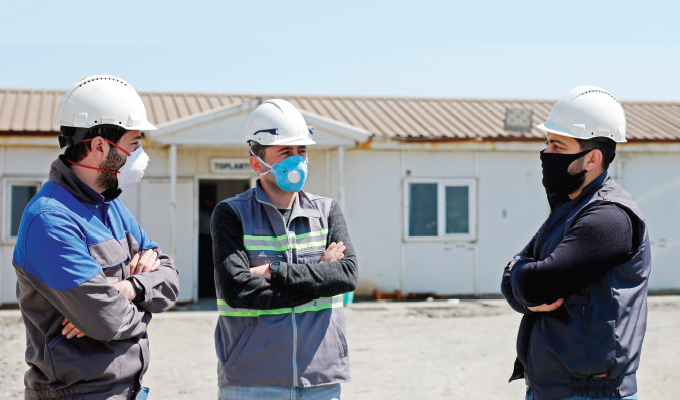What is “normal” now?
Ideally, it’s the life we lived prior to the COVID-19 pandemic. However, with so much up in the air, no one really knows what the normal will look like once the pandemic slows down. It will likely vary from city to city and state to state as different parts of the country slowly reopen and get back to “normal” operating practice. But most importantly, how will it impact frontline workers as they continue to travel our roads, make deliveries, and drive America forward?
The reality is that the way business is conducted may never be the same again. This series will include tips to help you and your fleet get back to “normal,” whatever that might look like for different organizations.
First on the list is implementing effective communications and coaching—one that can bring immediate impact to your fleet.
UNCLOG LINES
With COVID-19 on everyone’s mind, drivers (both commercial and consumer) are distracted even more than usual. Minds may drift off worrying about jobs, their families’ health, and what will happen tomorrow. It’s difficult to stay focused on today, let alone on what’s on the road in front of you.
Now more than ever, it’s important to unclog the lines of communication. Actively listen to your drivers; don’t simply think about what your next response will be. For instance:
- Pay close attention to the feelings that others express—verbally and nonverbally. It’s important to try to understand the message behind the words and actions to get a better understanding of their mindset.
- Don’t put your own feelings in place of another’s. Instead, listen to others’ points of view and put aside your own needs and ideas. Having an open perspective and dialogue will make for a cohesive work environment.
- Communicate in a more responsive way. With so many items changing daily and uncertainty at an all-time high, it’s vital fleets respond or give answers to the messages received to show you understand and hear them.
- As always, being a good listener means not interrupting. Let speakers finish what they are saying before you respond.
- Ask for more information whenever possible. If you or your team members don’t understand, always ask questions until there is a clear understanding.
Furthermore, remember that safety excellence is a collaboration between leaders and drivers. A relationship is based upon mutual respect and open, transparent communications. Open your door or pick up your phone. Either way, stop and listen.
CONSTRUCTIVE COACHING
“A good coach can change a game. A great coach can change a life.”
– John Wooden
In commercial transportation, drivers are the players and safety managers are the coaches. Fortunately today, tools are available that enable near real-time performance monitoring that provide the basis for focused, positive, and constructive coaching and recognition. With the right tools, drivers can better embrace coaching sessions and feedback as an essential way to continuously improve driving performance.
By building safe driving habits, over time fleets have fewer incidents that consume the valuable time of our task-saturated operations leaders. Time spent coaching is better than time spent investigating instances when there is a collision.
For many fleets, it’s difficult to coach drivers who are on the road for weeks at a time and may not have the opportunity to sit down for an in-person coaching session. By picking up the phone or setting up a video check-in, it’s a perfect opportunity to connect with drivers, learn about any difficulties, and let them know you’re there supporting them—even if you’re not with them physically.
Open communication and consistent coaching are the keys to keeping drivers motivated and your fleet moving forward. Whether your driver needs coaching or simply encouragement, give them a call and let them know you care.
FOR MORE INFORMATION
To gain more insights on communication and coaching, download the eBook, “Coach Your Drivers to Safety and Success,” from SmartDrive. It can help make coaching part of your safety culture, measure your coaching effectiveness, provide advanced analytics for coaching, and more. Find out more, visit www.smartdrive.net.




